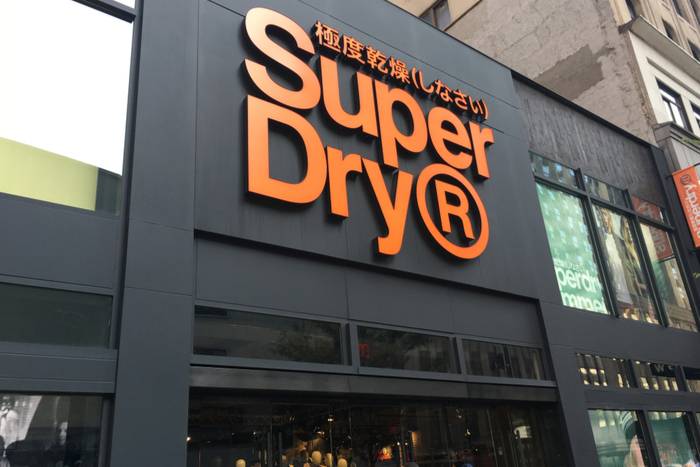“So, does anyone else not open Snapchat anymore? Or is it just me? Ugh, this is so sad.”
If there was any doubt left that we live in a world where social media and celebrity status reigns supreme, this seemingly innocuous tweet from Kylie Jenner was liked 321,000 times.
It also wiped $1.3 billion (£930 million) off Snapchat’s stock market value.
The power dynamic is shifting away from the traditional tastemakers who have influenced the world’s youth from behind a desk for the better part of a century, into the hands of the celebrity glitterati who can make or break a business in under 280 characters.
Retailers are beginning to understand the potential in this paradigm shift but few have been able to effectively position themselves to take full advantage of it – and the effects can have been harshly felt in the fashion industry.
But those who are able to, thrive. For example, in 2016 Kylie Jenner wore a $35 orange PrettyLittleThing (PLT) dress to the British online retailer’s US launch party. 24 hours later, the dress had completely sold out.
“The problem is nowadays people learn how to do business from older people,” PLT’s founder and chief executive Umar Kamani told the Retail Gazette.
“When a girl has 200,000 followers on social media and some magazines don’t even get that readership, you have to question if that girl is a better magazine than the actual magazine”
“Don’t get me wrong, I learn from my dad, but then you also have to be able to challenge what older people are doing as well.
“It’s important more young people start standing up and speaking about how things can be different, otherwise we just keep learning from what used to be.”
This ethos runs through the heart of Kamani’s online empire and has helped drive its staggering growth since its inception just over five years ago.
In 2012, Kamani and his brother Adam, the sons of Boohoo founder Mahmud Kamani, established PLT as an online accessories brand and retailer. It wasn’t long before the pair fell back into what they knew best and expanded into women’s clothing.
Since 2014, PLT has seen online traffic rise around 700 per cent. In the same year Kylie Jenner donned the dress, sales grew over 400 per cent.
These figures reflect the brand’s mastery of new media, a phenomenon it understands so well because it has developed alongside, and in tandem with, asserting as much influence over it as it has over the brand.
“PLT was moulded by the customer: we try things, we change things, we listen to the customer and we became this brand through the customers voice,” Kamani said.
“We’re a young business, we pride ourselves on our youth, our youthful management, our youthful leadership from start to end. A lot of businesses fear youth. Or maybe fear isn’t the right word – they neglect youth.
“We kind of encourage it here and we embrace it here. We embrace energy and we think the future is in the young people.”
PLT has become synonymous with celebrity and social media culture. It’s tough to browse Instagram, Twitter, or even ride the tube without seeing PLT’s logo on an ad sitting alongside a familiar celebrity face.
Unlike well-established retailers who by size and therefore nature have been slower in their adoption of new media, PLT has had the advantage of being born into it.
“We’ve come from the same era: social media growth, influencer growth, YouTube, bloggers, vloggers,” Kamani said.
“As PLT has grown as a brand, this whole culture has grown, which has been great because our youthful management has kept us close to that.
“There are lots of influencers being born every day. These influencers are replacing the traditional PR and marketing. It’s been a huge part of us.
“When a girl has 200,000 followers on social media and some magazines don’t even get that readership, you have to question if that girl is a better magazine than the actual magazine.”
Alongside being adept at utilising new media, PLT has achieved what it has in such a short time equally because of its ambition and agility.
The latter is key to maintaining the pace at which fashion moves in the modern world, especially when it is so closely in tune with social media.
Though the logistical aspect of fast-fashion is another continually developing and fiercely modern approach, this concept penetrates the very core of PLT.
“I think those long-term plans are old fashioned, they slow businesses down”
“I don’t know what the next five months look like,” Kamani stated.
“We don’t have a big long-term plan, five-years or 10 years. I think those long-term plans are old fashioned, they slow businesses down.
“Everyone is used to that, it’s a bit of a joke that everything is last minute here. It’s also what keeps us so fresh, it keeps us reactive and it’s an advantage over some of those retailers that have been around so long. They can’t maneuver as fast as us.”
Being agile is clearly vital in modern fashion, but the reason PLT wields so much influence is because it encapsulates and personifies the same characteristics as the celebrities on its adverts: ambition and confidence. With Kamani at the helm it’s not hard to see where this comes from.
“For me, I don’t think we’re successful enough yet,” he conceded.
“A lot of people would say we are, I think we aren’t we have a long way to go, we still have a lot to achieve. We’ve still got a lot to work on and a lot to improve, we’ve still got a lot of hard obstacles to jump through.
“I believe the potential is far more than where we are. At this stage I see a lot of businesses losing track of what they are and losing focus.
“I don’t know what success looks like but for me, this isn’t successful enough yet, but we’re on a fantastic path.
“Unfortunately, we are ageing every year, there’s a new wave of youth coming through so for us it’s important to stay on top of that and keep relevant.”
Click here to sign up to Retail Gazette‘s free daily email newsletter


















